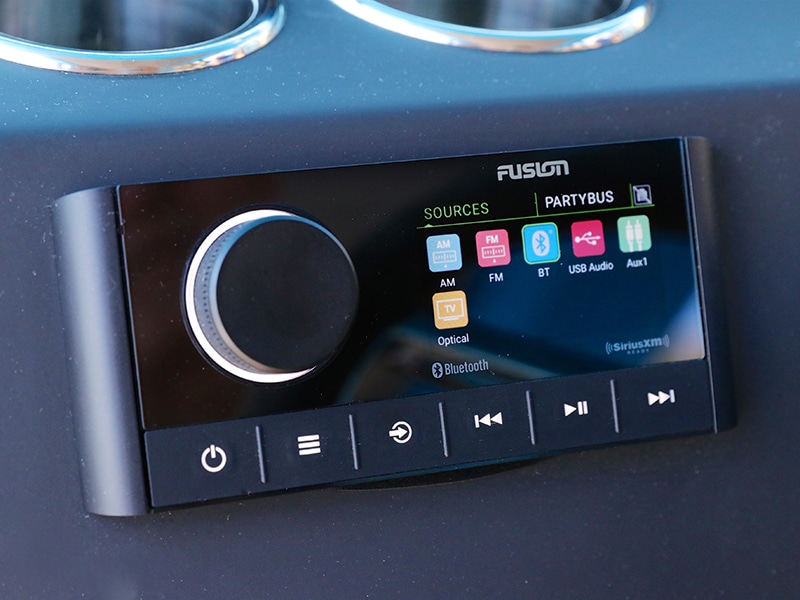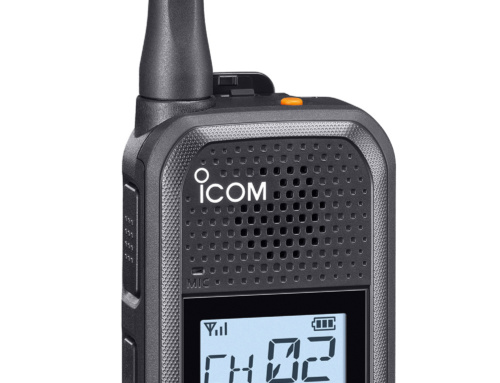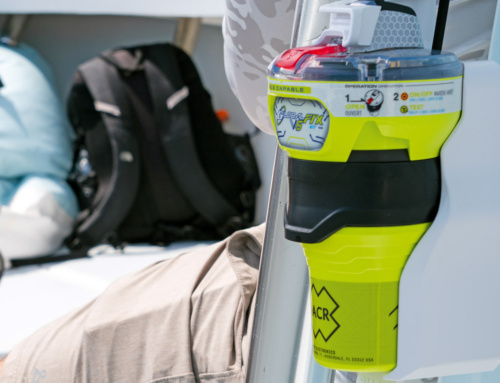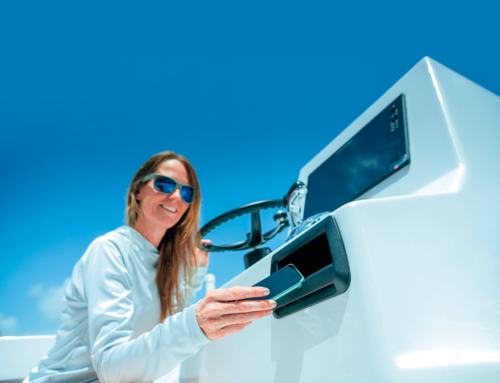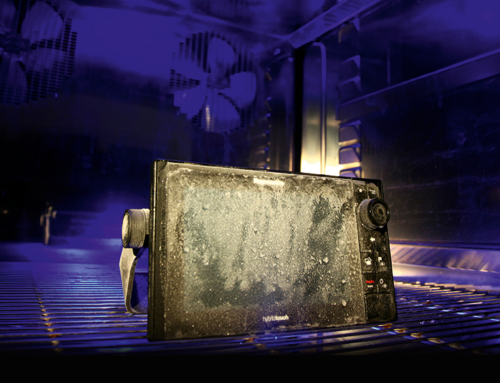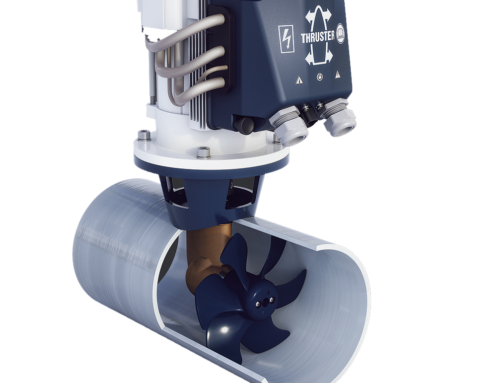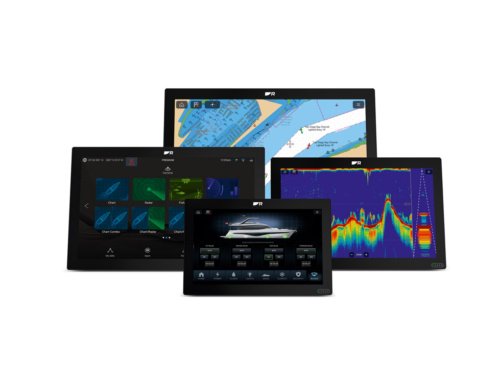- I had no issues getting mp3 tunes from my iPhone into the RA670.
- I can report that the sound did not break up, go ragged or, worst of all, fatigue the ear at full system volume.
- At no time did the speakers sound overworked, harsh or overdriven.
Alex Whittaker auditions an innovative stereo that defines a new benchmark …
The Fusion Apollo RA670 is a versatile and feature-rich marine stereo unit. Its sleek and fashionably minimalist exterior also houses a powerful integral amplifier. This small-footprint unit has a variety of mounting options, fits an existing DIN aperture if required, and can be both surface- and flush-mounted. The flush-mounting option is exquisitely classy and hi-tech, and mates particularly well with modern glass cockpits. In addition, the unit is shockproof, dustproof and waterproof. It has no moving parts and will not glitch when you pierce that next big wave.
User interface
The user interface is effortlessly intuitive. This means that all the primary operating functions are instantly to hand at the click of a single control, or via the bank of clear press buttons. This makes the RA670 very easy to operate at the helm of a fast boat.
Feature-rich
The ability to mirror the RA670’s clear 2.7in glass LCD colour screen onto a larger MFD (multifunction display) at your helm really does open up the many additional features of this unit. Having said that, as an open-cockpit man, I was also very happy just to use the integral glass colour LCD screen, which I found I could view in bright Mediterranean sunlight.
Power
Most powerboats and RIBs produce noise, so a marine stereo has to have a decent amount of grunt to overcome that ambient inevitability. As I found out on test, the RA670’s integral four-channel amplifier is certainly up to the job. It can deliver a meaty 4 x 70 watts RMS into a 4-ohm load (280 watts peak). It manages this at 10% total harmonic distortion (THD), which might look a trifle elevated if you are a traditionalist audiophile sitting comfortably at home. However, when crashing over the oggin, I found this amplifier stage performed remarkably well.
DAB-ready
The RA670 has a good-quality integral AM/FM radio tuner for BBC Weather broadcasts, FM music stations and The Shipping Forecast. It is DAB-ready, but not UK DAB-capable, out of the box. The unit does not have, or need, an integral CD player. The RA670 had all I would specify as a fast-boat skipper.
Control freak
The days of twiddling fussy front-panel knobs have long gone. Consequently, the RA670 has a useful number of alternative ways of being remotely controlled. It may be operated via its own front panel, via your smartphone, via a Fusion remote control or even via the aforesaid multifunction display at your helm. If you happen to own a Garmin smartwatch, that will control the RA670 too.
Connectivity
The first thing to note is that although Fusion have delivered a genuinely feature-rich design, you can operate the RA670 instantly out of the box. You can do this directly from its front panel, or better still, crewmembers can do it from their smartphones. This means Bluetooth will probably be the RA670’s favoured mode of access on sports boats and RIBs. So almost straightaway there is a design tension between the desire for hi-fi sound and the convenience and portability of smartphone music files. Now, even though most music on the planet is carried in mp3 file format on our smartphones, it has to be admitted that the humble mp3 file is hardly the highest of fi. The RA670 therefore does allow you to play back other higher-fi, higher file-size music formats, including M4A and FLAC.
Technical advance
Fusion have taken a long, hard look at the competing requirements of playback quality, convenience and the environment, and have put their faith in technical innovation. Chiefly, they have taken the bold decision to sidestep the traditional linear hi-fi ‘Class A amplification’ debate and go for a high-tech update of Class D amplification. Class D amplification, if done well, can achieve a number of goals. It can deliver high sound outputs at a relatively modest energy draw from your boat battery. Such amplifiers can also be made to produce much less waste heat. In a modern world, genuinely struggling with the demand for reduced energy requirements, every bit helps. Also, since manufacturers like Fusion consciously strive to extend the life of their products through good initial design, tough build standards and constant firmware updating, the new RA670 looks like a durable long-term solution.
Sea trial
Let’s cut to the chase. I found myself part of a posse of international journalists who were sent to sea to test the product. We were cast adrift off Mallorca on two bold and achingly fashionable Axopars, each fitted with the new RA670 stereo. My boat was an Axopar 37 fitted with 2 x Mercury 350hp outboards. The other press boat was an Axopar 28 fitted with a Mercury 300hp single. I was able to evaluate the system while thrashing across a lumpy Med at about 35 knots. Later, when anchored in the tranquillity of a quiet cala, I could assess audio performance at lower listening levels.
Findings
My first observation was that I had no issues getting mp3 tunes from my iPhone into the RA670. My second observation was that the system was easily loud enough. Bear in mind that this active listening was taking place above the noise of two 350hp outboard engines, the battering of the waves on the hull and the hubbub of eight or ten chattering hacks. My third observation concerns the musical refinement of the sound, especially at higher listening levels. I can report that the sound did not break up, go ragged or, worst of all, fatigue the ear at full system volume. It was surprisingly smooth. At no time did the speakers sound overworked, harsh or overdriven. In short, even with humble mp3 music files, the RA670 delivered a remarkable ‘musicality’. There was not that slightly ragged, antiseptic sparseness typical of some digital music systems.
Digital signal processing
At this point you may well be asking how this audio magic was achieved. First of all, a careful matching of Fusion audio components, such as loudspeakers, in the drive train.
Second, the RA670’s ability to know intelligently which components it was connected to, optimising its signal output for that load and thus safely maximising the power sent to the loudspeaker. Third, the use of advanced DSP (digital signal processing) techniques to ‘tune’ the tone of the signal that the RA670 delivers to the loudspeakers to deliberately optimise their audio responses. The Fusion system sets up different operational profiles for each loudspeaker and will never overdrive them. Finally, algorithms inside the firmware look ahead to transience in the music while the music file is playing, logging where each unusually loud or very quiet event in the music will occur. The Fusion Apollo ‘feed forward’ system then anticipates these passages and actively processes them sympathetically in real time. My ears interpreted all this as transparent music, not harsh ‘signal processing’. Frankly, I was impressed.
The verdict
If you are in the market for a ‘future-proof’ DIY upgrade for your sound system, look first at the Fusion Apollo series.
Pros
- Good, unstrained, musical sound
- Easily loud enough for an open cockpit at speed
- Energy efficient, environmentally engaged, cool running
- Very easy to operate
- Great aesthetics in any setting, on deck or in the saloon
- Great build quality
- Vast feature set
- As future-proof as you will get
- Not cheap, but very good value for money
- Lots of loudspeaker options
- A range of aesthetically delightful mounting options, especially those for minimalist modern ‘glass cockpits’
- Fusion PartyBus and Fusion Multi-Zone Control are supported (see Fusion website)
- Apple AirPlay supported
- Over-the-air software updates via the free Fusion-Link app or USB
- Can play back the sound from your digital TV via S/PDIF port
- Also works with a vessel’s Wi-Fi network
- Ethernet port
- USB, AUX and digital optical input
- Audio outputs x 3
Cons
- Speakers cost extra
- No DAB radio*
- No CD player*
* Ask yourself: Does this really matter?
Online Video
Fusion Apollo 670 website: https://www.youtube.com/watch?v=BFkhwFxx3i4

